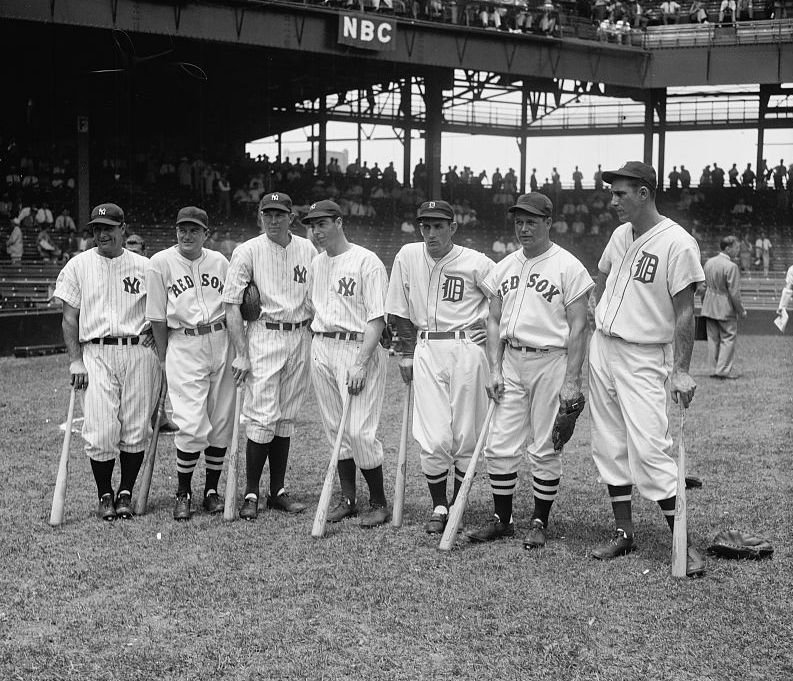
By Harris & Ewing (Library of Congress Harris & Ewing collection) [Public domain], via Wikimedia Commons
Since I’m a nerd who enjoys lists, I wanted to post the top 100 position players by C-WAR. Below is that list.
Are those the top 100 position players every to play baseball? No, but it’s a pretty good start. Just for fun, here is next 100.
Since Baseball Prospectus does not publish WAR data for players before 1950, this does create a bit of unfair advantage for those players. This is because of the three sites, Baseball Prospectus tends to have the lowest WAR values for a player (especially with pitchers), so it puts modern players (1950-present) at an unfair disadvantage. So to adjust for this, below is the top 100 excluding Baseball Prospectus’ WAR altogether.
And the next 100 as well.
I prefer this list to the one that includes BP’s WAR. Once BP publishes WAR data for every player, using all three will make more sense.
Baseball- Reference tends to represent the middle ground of value between all three sites. FanGraphs usually produces the highest WAR, followed by Baseball-Reference, and Baseball Prospectus. This is because each site has a different starting point for what a replacement level player is. FanGraphs has a lower starting point, thus produces higher WAR estimates. For example, Only four Hall of Fame position players have a greater rWAR (Baseball-Reference) than fWAR (FanGraphs). Those players are Cap Anson (91.1-86.9), Ozzie Smith (73.0-70.1), Ryne Sandberg (64.9-62.6), and Sam Thompson (42.1-40.6).
Since I calculated peak using only rWAR, below is the top 100 using just Baseball Reference’s WAR. Another words this is a player’s career WAR plus his eight year peak using on Baseball-Reference. FanGraphs and Baseball Prospectus are not factored in to the chart below at all.
And the next 100:
I like this list as well, having one constant is nice and rWAR is the most stable of the three but this list does depend solely on the estimates from one source. There are pros and cons to this, but this list works just fine, especially if you only use Baseball-Reference’s WAR. I prefer the 2nd list that also includes FanGraphs but think all three are valuable to look at.
One other note, because C-WAR focuses only on WAR, it makes it impossible for me to include players who played exclusively in the Negro Leagues with any of these calculations. Nothing has diluted stats and the integrity of the game like the exclusion of black players for over fifty years. While I can’t include them in C-WAR, I encourage you to visit the websites for the Negro Leagues Baseball Museum, and the National Baseball Hall of Fame to find out more about the players who likely would have cracked the top 100 had they simply been allowed to have played in the majors.
Many thanks to the incredibly smart people who work at Baseball-Reference, FanGraphs, and Baseball Prospectus. Without their tireless efforts to improve and maintain their sites and information none of this research would be possible.
Any questions or comments about the Hall, or a player listed or not listed above, send them to contact@replacementlevelpodcast.com or find me on Twitter @Rosscarey
Originally posted 10/24/12